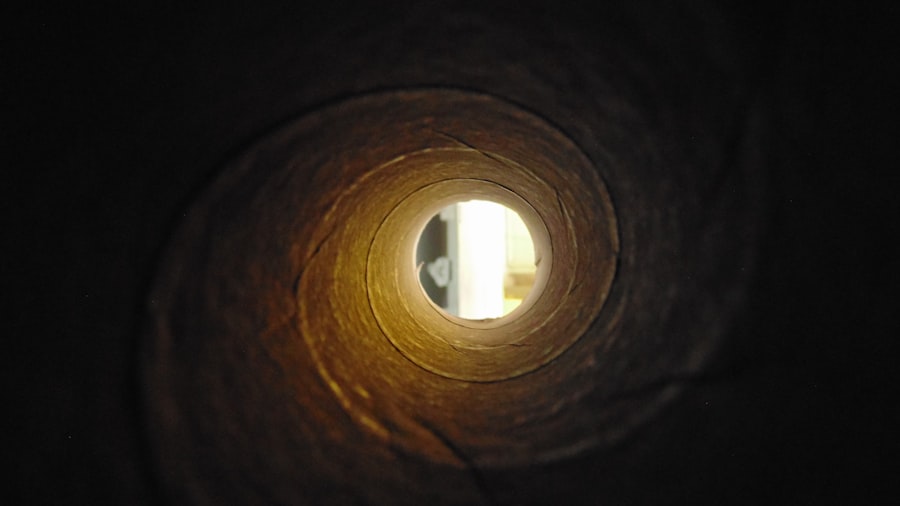The Drake Passage, a body of water that separates South America from Antarctica, is renowned for its tumultuous seas and unpredictable weather. This narrow stretch of ocean, measuring approximately 800 kilometers (500 miles) wide, serves as a critical conduit for maritime traffic between the Atlantic and Pacific Oceans. Named after the English explorer Sir Francis Drake, who navigated these waters in the late 16th century, the passage has become synonymous with adventure and peril.
For centuries, it has captured the imagination of sailors, scientists, and travelers alike, drawing them into its depths with the promise of discovery and the thrill of the unknown. The Drake Passage is not merely a geographical feature; it embodies a unique blend of natural beauty and formidable challenges. Its waters are often characterized by high winds and towering waves, making it one of the most treacherous maritime routes in the world.
Yet, despite its reputation for rough seas, the passage is also a vital ecological zone, teeming with marine life and serving as a critical habitat for various species. As explorers and researchers continue to study this remarkable area, the Drake Passage remains a focal point for understanding the complexities of oceanic ecosystems and climate dynamics.
Key Takeaways
- The Drake Passage is a treacherous body of water located between South America’s Cape Horn and the South Shetland Islands of Antarctica.
- The geography of the Drake Passage is characterized by strong winds, large waves, and cold temperatures, making it one of the roughest seas in the world.
- The history of the Drake Passage is filled with tales of exploration, shipwrecks, and scientific discovery, dating back to the 16th century.
- The science behind the rough waters of the Drake Passage is attributed to the Antarctic Circumpolar Current and the lack of continental barriers, allowing for unimpeded water flow.
- The Drake Passage has a significant impact on wildlife, serving as a crucial migratory route for marine mammals and seabirds.
The Geography and Climate of the Drake Passage
Geographically, the Drake Passage is situated between Cape Horn at the southern tip of South America and the Antarctic Peninsula. This strategic location makes it a significant area for ocean currents, particularly the Antarctic Circumpolar Current, which flows unimpeded around Antarctica. The passage’s depth varies considerably, with some areas plunging to over 5,000 meters (16,404 feet), creating an underwater landscape that is as diverse as it is dramatic.
The convergence of cold Antarctic waters with warmer currents from the north contributes to the passage’s notorious weather patterns. The climate of the Drake Passage is characterized by its extreme variability. Sailors often describe it as experiencing all four seasons in a single day.
Storms can arise suddenly, bringing fierce winds that can reach speeds of over 100 kilometers per hour (62 miles per hour). The region is also known for its fog and rain, which can obscure visibility and complicate navigation. Despite these challenges, the passage’s unique climate supports a rich array of marine life, including krill, which forms the foundation of the Antarctic food web.
Understanding the geography and climate of the Drake Passage is essential for those who venture into its waters, as it plays a crucial role in shaping both the environment and the experiences of travelers.
The History of the Drake Passage

The history of the Drake Passage is steeped in exploration and adventure. Sir Francis Drake was one of the first Europeans to navigate these waters in 1578 during his circumnavigation of the globe. His journey marked a significant moment in maritime history, as it opened up new routes for trade and exploration.
Over the centuries, many explorers followed in his wake, drawn by the allure of uncharted territories and the promise of discovery. The passage became a critical route for whalers, sealers, and later, scientific expeditions seeking to understand the Antarctic region. In addition to its role in exploration, the Drake Passage has also been a site of significant historical events.
During World War II, it served as a strategic route for naval operations in the South Atlantic. The passage’s treacherous waters have claimed numerous ships over the years, leading to tales of shipwrecks and maritime disasters that have become part of its lore. Today, the Drake Passage continues to be a vital route for research vessels and cruise ships alike, as they navigate its challenging waters in pursuit of knowledge and adventure.
The Science Behind the Rough Waters
| Topic | Metrics |
|---|---|
| Wave Height | 10-20 feet |
| Wave Frequency | 8-12 seconds |
| Wind Speed | 20-30 knots |
| Water Temperature | 15-20 degrees Celsius |
The rough waters of the Drake Passage are not merely a product of chance; they are influenced by a complex interplay of oceanographic factors. The convergence of different ocean currents creates turbulent conditions that can lead to steep waves and unpredictable weather patterns. The Antarctic Circumpolar Current plays a pivotal role in this dynamic, as it flows continuously around Antarctica without any landmass to impede its progress.
This current generates powerful swells that can build up over vast distances before crashing into the shores of South America. Scientists have long been fascinated by the unique hydrodynamics of the Drake Passage. Research has shown that wind patterns, water temperature variations, and salinity levels all contribute to the passage’s notorious conditions.
Understanding these factors is crucial for predicting weather patterns and ensuring safe navigation through this challenging region. Moreover, ongoing studies aim to explore how climate change may be impacting ocean currents and weather systems in the Drake Passage, highlighting its importance as a barometer for broader environmental changes.
The Impact of the Drake Passage on Wildlife
The Drake Passage is not only significant for maritime navigation; it also plays a crucial role in supporting diverse marine ecosystems.
The passage serves as a migratory route for many marine animals, providing essential feeding grounds for species such as humpback whales and orcas during their seasonal migrations.
The presence of krill in these waters is particularly noteworthy, as it forms the basis of the food web that sustains larger predators. The ecological significance of the Drake Passage extends beyond its immediate waters. The currents that flow through this region help distribute nutrients throughout the Southern Ocean, influencing marine life far beyond its borders.
Researchers have documented how changes in ocean temperature and salinity can impact species distribution and abundance in this delicate ecosystem. As climate change continues to pose threats to marine environments worldwide, understanding the impact of human activity on wildlife in the Drake Passage becomes increasingly important for conservation efforts.
Navigating the Drake Passage: Challenges and Strategies

Navigating through the Drake Passage presents unique challenges that require careful planning and preparation. The unpredictable weather conditions can turn calm seas into raging storms within hours, making it essential for vessels to be equipped with advanced navigation technology and experienced crews. Sailors must remain vigilant and adaptable, ready to alter their course or seek shelter if conditions deteriorate unexpectedly.
To successfully traverse these treacherous waters, many vessels employ specific strategies designed to mitigate risks. For instance, some ships choose to travel during certain times of year when weather patterns are more favorable. Additionally, modern advancements in meteorological forecasting allow crews to receive real-time updates on changing conditions, enabling them to make informed decisions about their journey.
Despite these precautions, navigating the Drake Passage remains an adventure fraught with uncertainty—a testament to nature’s power and unpredictability.
Personal Experiences: Tales from the Drake Passage
Personal accounts from those who have traversed the Drake Passage often reflect a mix of awe and trepidation. Many sailors recount their experiences with towering waves that seem to rise from nowhere, creating an exhilarating yet nerve-wracking atmosphere on board. Some describe moments when they felt completely at the mercy of nature, while others share tales of camaraderie among crew members as they faced challenges together.
Travelers on expedition cruises often speak of their encounters with wildlife during their journey through the passage. Sightings of whales breaching in the distance or seabirds soaring overhead create unforgettable memories that linger long after their voyage has ended. These personal stories highlight not only the beauty and majesty of the Drake Passage but also its capacity to inspire wonder and respect for the natural world.
The Future of the Drake Passage: Environmental Concerns
As global climate change continues to reshape our planet’s ecosystems, concerns about the future of the Drake Passage have come to the forefront. Rising ocean temperatures and melting ice sheets pose significant threats to marine life and habitats within this region. Changes in salinity levels can disrupt established food webs, potentially leading to declines in key species such as krill—an essential resource for many animals in the Southern Ocean.
Moreover, increased shipping traffic through the passage raises additional environmental concerns. The potential for oil spills or other accidents poses risks not only to marine life but also to fragile ecosystems along South America’s coastlines. As awareness grows about these issues, there is an urgent need for collaborative efforts among governments, researchers, and conservation organizations to protect this vital marine environment for future generations.
Tourism in the Drake Passage: Is it Worth the Rough Waters?
Tourism in the Drake Passage has gained popularity in recent years as adventurers seek out unique experiences in one of Earth’s last frontiers. While some travelers are drawn by tales of rough seas and thrilling voyages, others are motivated by a desire to witness breathtaking landscapes and diverse wildlife firsthand. Expedition cruises offer opportunities for passengers to explore remote islands and observe marine life up close while navigating through these challenging waters.
However, potential travelers often weigh the risks against rewards when considering a journey through the Drake Passage. The rough conditions can lead to seasickness or discomfort during transit; yet many who have braved these waters return with stories that celebrate their resilience and sense of accomplishment. Ultimately, whether or not it is worth enduring rough waters depends on individual preferences—some may find exhilaration in overcoming challenges while others may prefer calmer seas.
Safety Precautions and Tips for Traveling through the Drake Passage
For those planning to travel through the Drake Passage, safety should be a top priority. It is essential to choose reputable tour operators with experience navigating these waters; they will have knowledgeable crews trained to handle emergencies effectively. Travelers should also familiarize themselves with safety protocols on board their vessel and be prepared for changing conditions by packing appropriate clothing and gear.
Additionally, maintaining open communication with crew members can enhance safety during transit. Passengers should feel comfortable asking questions about weather forecasts or potential hazards along their route. Staying informed about sea conditions can help travelers manage expectations while fostering a sense of camaraderie among fellow passengers as they embark on this shared adventure.
The Mystique and Majesty of the Drake Passage
The Drake Passage stands as a testament to nature’s power—a place where beauty meets danger in an awe-inspiring display of raw energy. Its rich history intertwined with exploration reflects humanity’s enduring quest for knowledge and adventure amidst formidable challenges. As scientists continue to study this remarkable region’s ecology while travelers seek out its wonders firsthand, one thing remains clear: The mystique and majesty of the Drake Passage will continue to captivate those who dare to venture into its depths.
In an era marked by environmental change and increasing human activity within fragile ecosystems, understanding and protecting this unique marine environment becomes paramount. Whether through scientific research or responsible tourism practices, there lies an opportunity for individuals to contribute positively toward preserving both its natural beauty and ecological significance for generations yet unborn.
The Drake Passage is notorious for its rough seas, often challenging even the most seasoned sailors with its unpredictable weather and strong currents. For those interested in learning more about the geographical and historical significance of this treacherous stretch of water, you might find the article on MyGeoQuest insightful. It delves into the unique characteristics of the Drake Passage and its impact on maritime travel.
